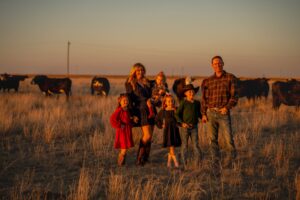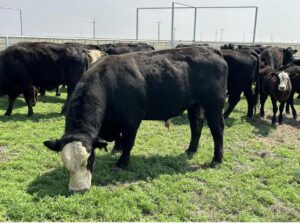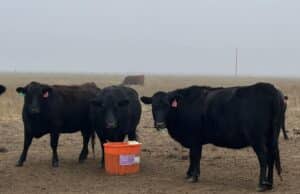Last updated on September 18th, 2024 at 10:07 am
Riomax Has Your Back
For Julie Gibson, adding Riomax was a confidence booster
Julie & John Mark Gibson
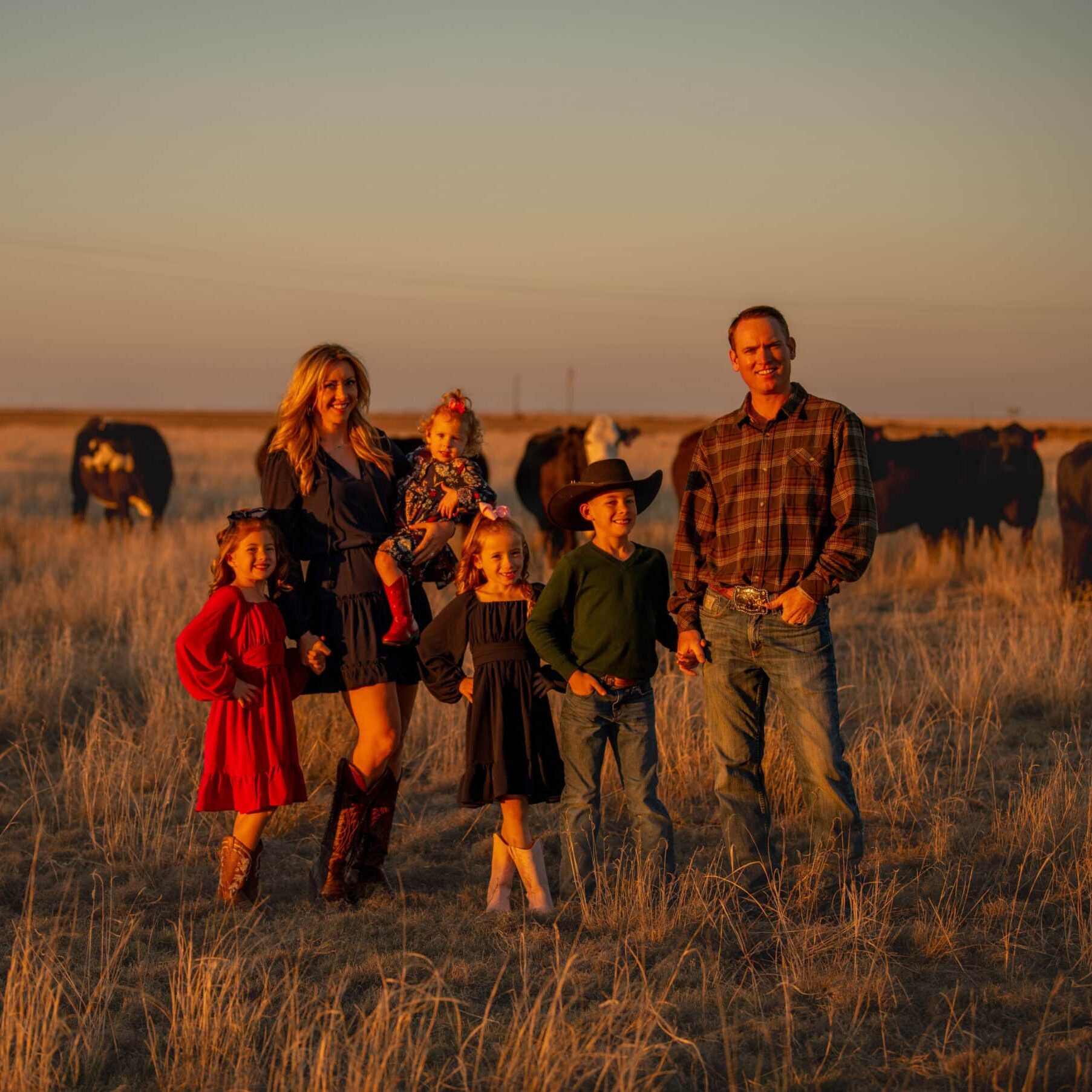
Nazareth, Texas
“You can observe a lot by just watching,” the great American philosopher Yogi Bera once said. Julie Gibson agrees, especially when it comes to walking your pastures.
She advises that you look at the manure piles. If they’re piled high, your cows are nutritionally stressed. If they’re pancake flat, your cows are wringing every bit of nutrition available out of the forage.
Then look up. See a sheen on their coat? See healthy calves running, jumping, and playing? She does now. So does her husband, John Mark Gibson, as well as her father and father-in-law.
Three years ago, that view was different. Much different. Cow body condition was poor, their coats were dull and flat, calves were sick. How that changed is a story of how Riomax has their back.
Three-in-One Ranching
“We really have three entities,” she explains about their operation around Nazareth, Texas, in the southern Texas Panhandle. “My father-in-law and my husband have an operation, then my father has an operation that I help out with quite a bit, and then my husband and I have an operation. So between the three entities, we’re running around 1,000 cows.”
All three are commercial outfits, but with different goals and markets. John Mark and his father run Red Angus and their main market is bred heifers. That herd, managed much like a seedstock herd with recordkeeping and AI, calves in the spring and fall.
Julie and her dad run commercial black Angus bred to Hereford bulls, producing black baldy feeder calves. “And my husband’s and my herd is very similar because Dad and I ran cattle together before John Mark and I got married.”
The Angus-Hereford herds start calving in January. While the spring weather can be chancy, doing that gets calves on the ground before spring storms start rolling in. Calving later in the spring means it’s getting too hot.
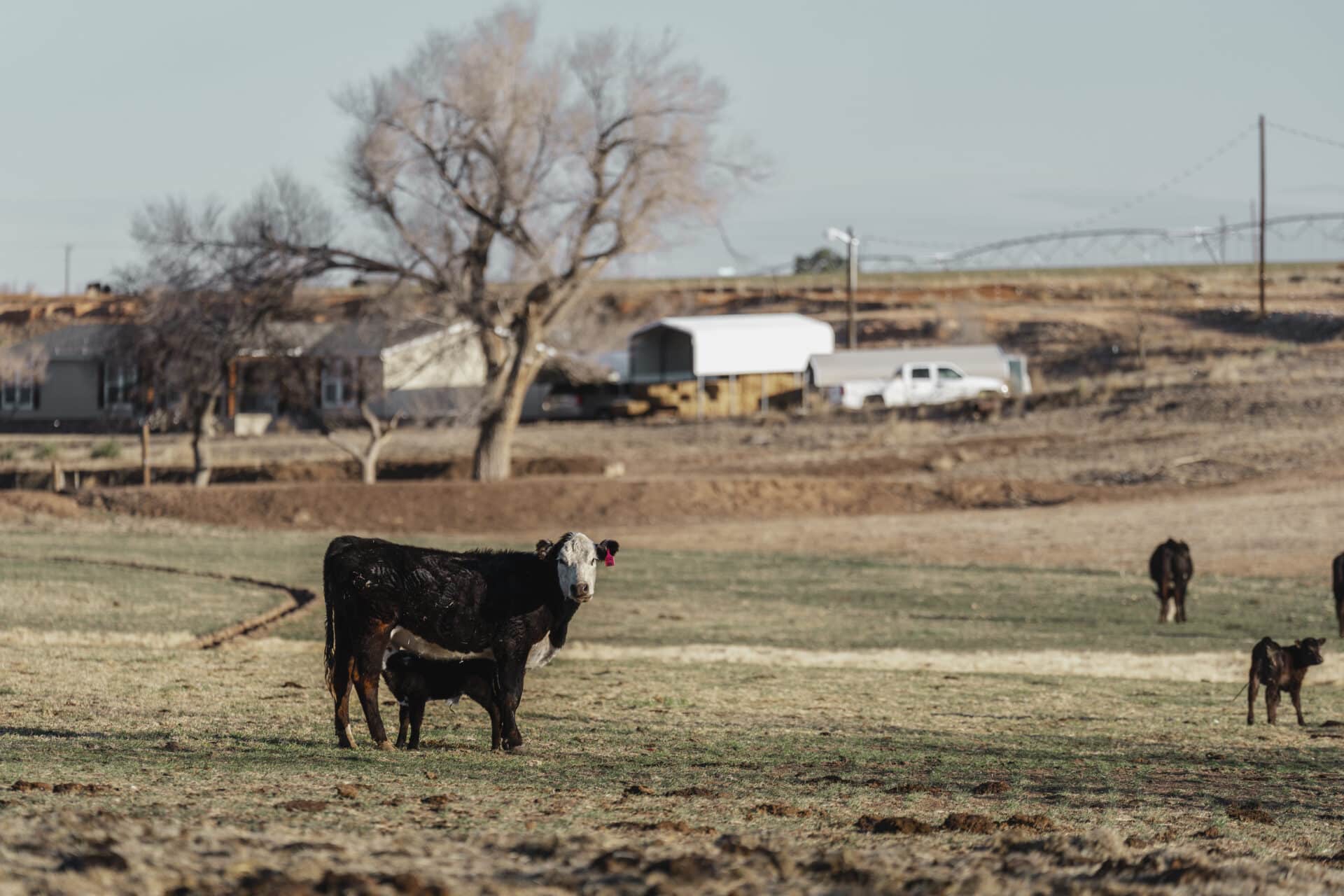
“January has been good for us because when we get ready to wean, we hopefully have some wheat pasture ready to turn them out on. And we have a pretty heavy calf crop because we calve a little earlier than everybody else.”
If wheat pasture or stalks are available to lease, they’ll wean the black baldy calves for 60 days and sell them to grow yards or through an auction market at around 800 pounds.
They’ve looked into selling through Superior video auctions as well, because of the Riomax badge that Superior adds to the description. “Feedyards have noticed the difference that Riomax cattle feed out well and perform really well.”
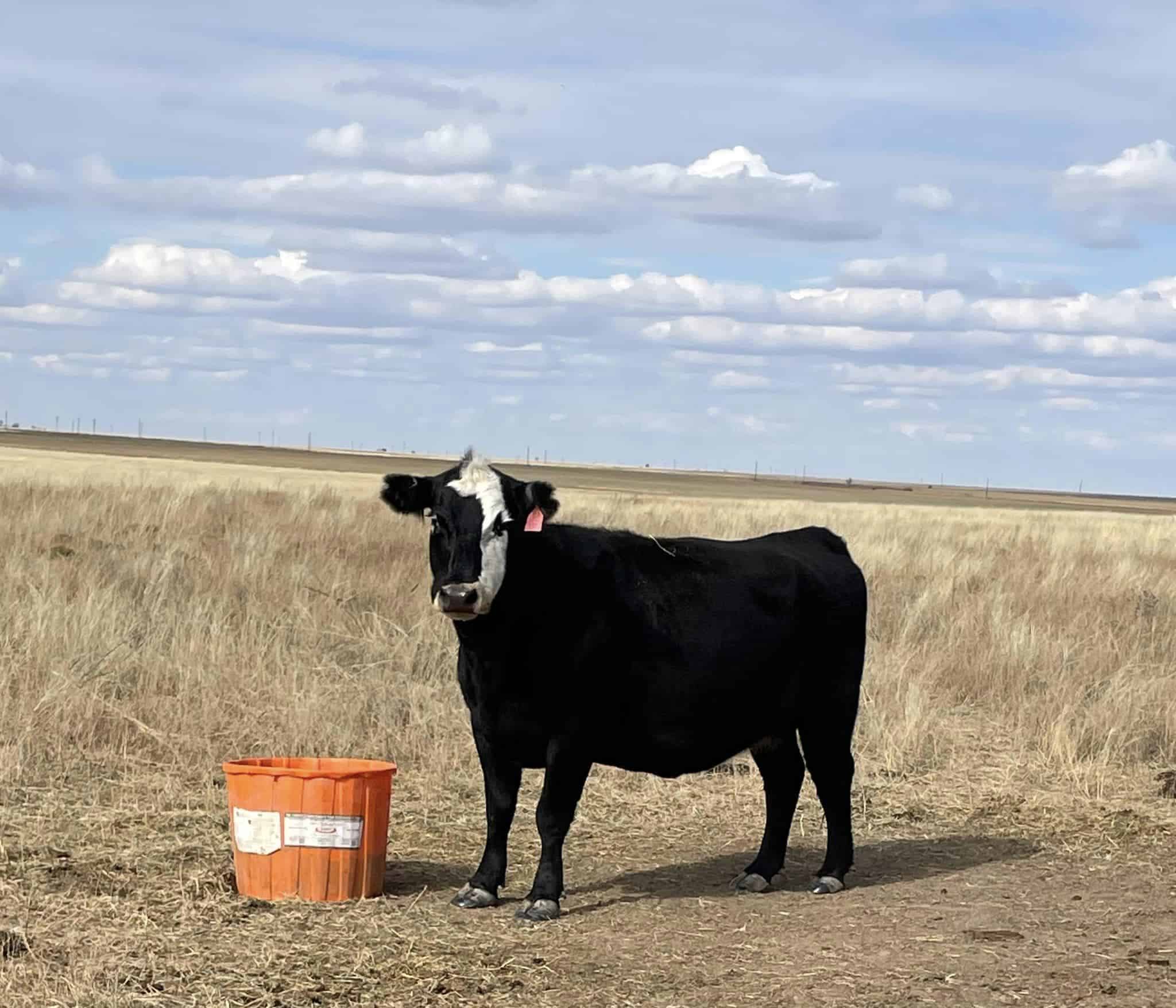
However, the area has been wracked with drought for years and it seems to have no end in sight. “If we have wheat, we’ll try to wean. But if not, we might just sell them straight off the cow in October or November. We don’t want to use our grass for our calf crop when we’ve got to save it for our cows.”
They run their cows on grass year-round but will augment that with wheat pasture or grain stalks if any are available to lease. The pastures are mainly CRP grass, or Conservation Reserve Program. Some pastures are land that’s still in the CRP but have been released for haying and grazing because of the drought. Other pastures are former CRP land that has been taken out of the program.
Either way, the grass quality is really low, she says. “It’s not as nutrient dense as the native grass would be. So we have struggled in the past with having good nutrition for our cattle until Riomax came into the picture and filled that gap of what the CRP grass was providing for our cattle.”
Riomax Across the Board
With three different entities, there are plenty of ideas on how to manage things. “Our common denominator with that is Riomax,” she states. “We have seen amazing results and it’s made a huge difference in how we run things and just our whole management process.”
For three different herds to work together, there must be some shared resources. When it came to hauling loose mineral, protein tubs, salt blocks and cake, or protein cubes, to the cattle, Julie was it.
“That was really labor-intensive, especially when we were running calves on wheat pasture. They would just blow through it; you could never keep it out fast enough.”
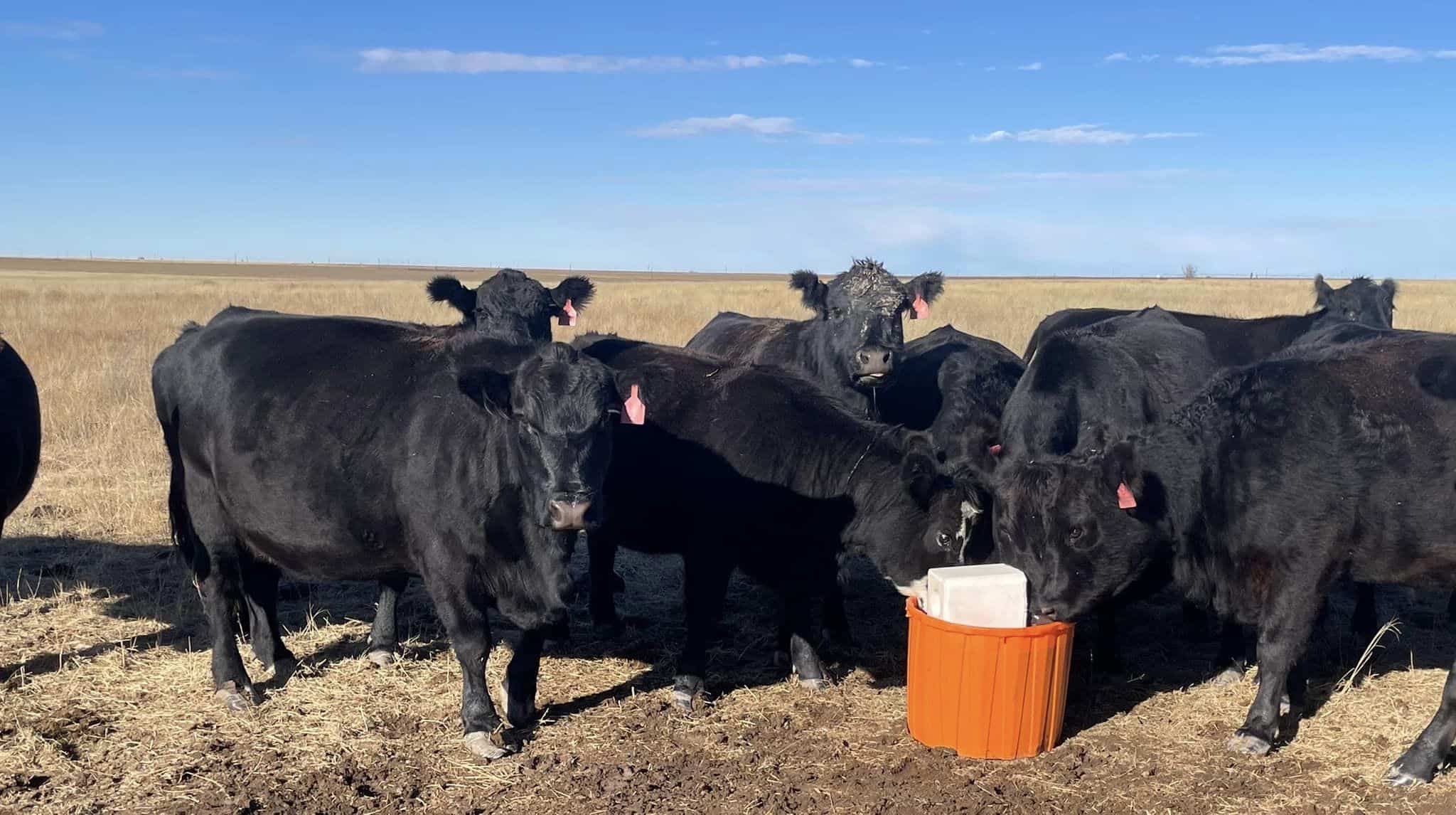
Then a rancher friend learned of Riomax and wanted to try it. He asked the Gibsons to share a semi-load on a trial basis. “I was told one tub would last 50 head a month. I was pretty excited to see if that was really true to just consolidate our supplementation.”
It didn’t take long. “Within two weeks I noticed a difference in our cattle, in the way they looked. Their hair coats were shiny, their hooves were shiny, their manure had totally changed. You can read a lot of what’s going on with your cattle by the manure and it was flat like pancake batter.”
That’s because the digestion pack in the orange Riomax tub helps support rumen health and helps the cattle break down the poor-quality CRP grass and get more out of every bite, she says. “The forage is fully digested, and the cattle are really able to be more efficient eaters and utilize this poor-quality feed we have.”
Then there’s health. “With the mineral pack that’s in it, it helps with the immune system and keeps our herd healthier overall.”

Grazing cows and calves on tall, dry CRP grass, along with ever-present flies, created a huge pinkeye problem in the summer. She remembers the summer before they started on Riomax spending almost every day treating calves for pinkeye. This year will be their third calf crop with the cows on Riomax year around and adding Repel, they have completely eliminated pinkeye.
“Another issue we always dealt with were hoof issues—cracked hooves, foot rot, things like that. But with this mineral pack providing everything the cattle need, we have overall better hoof health, too,” she says. What’s more, “It’s been noticeable in our milk production. You can see their udders are full and tight compared to the volume previously, especially in our first-calf heifers.”
Pinkeye, hoof issues, and other health problems are things that many beef producers might consider as simply a part of ranching. “Now we see that a lot of that can be prevented by better nutrition for your cattle.”
That’s especially true with first-calf heifers. Those new mamas are struggling to stay on top of their nutrition as they continue to grow themselves, nurse a calf, and grow another in the womb. “That really pulls them down and the calves suffer for that; their mineral bucket is just lacking,” she says.
“Providing them with Riomax, those baby calves are born with their mineral bucket full and they hit the ground running. They have more vigor and their immune system is top-notch the second they hit the ground.”
In fact, Julie sees that throughout the three different herds. “We feel like we see a consistency in overall better immune systems and better health in our calf crop across the board.”
That’s where the Riomax advantage extends far beyond the orange tabs. “We just don’t doctor cattle anymore,” she says. That cuts medicine cost and labor.
They were pleased that the consumption guarantee held true and their cattle leveled out at a third pound daily. That eliminated all the other supplements plus constant trips to refill mineral feeders. “That was a big game-changer for us as far as labor intensity, our fuel costs went down and the overall management became simpler,” she says.
“Riomax has made me a more confident rancher,” she states. “There are so many obstacles that we face, but I feel like I have a consistent product that helps us get through some of the challenges we face. My consistent through the storm is Riomax to provide the best nutrition for our cattle.”
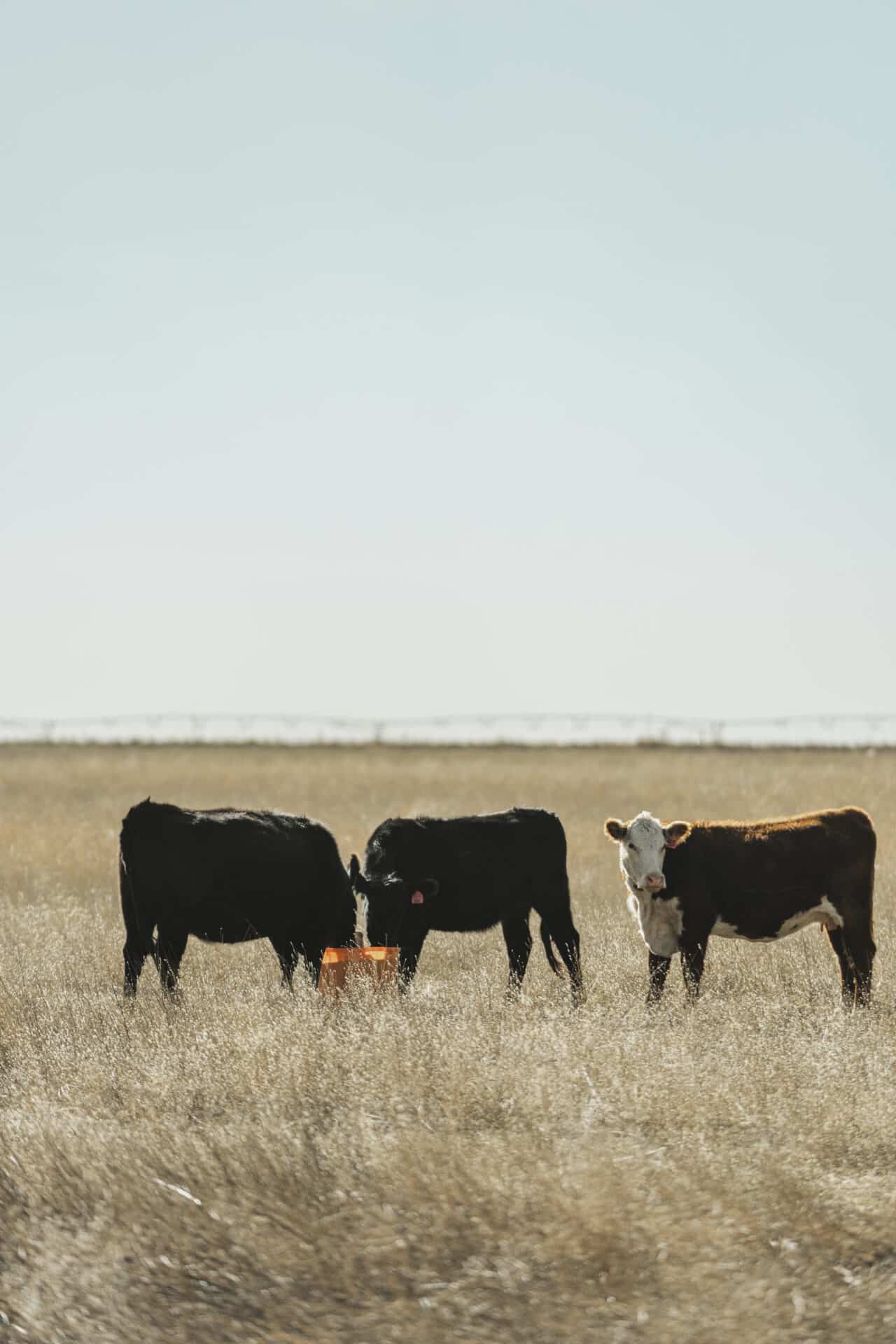
Top-Notch Dealer
Julie is not just an enthusiastic Riomax customer, she’s the largest Riomax dealers in the country. “I’m selling in six different states and I get to see the product work on different kinds of grazing, different climates and temperatures, some are in drought and some aren’t. To see the product work year-round for everybody has been pretty awesome.”
But it runs deeper than that. Just as Riomax gave the Gibsons a confidence boost, it’s done the same for Julie’s customers. “Just lifting up the morale for ranchers going through all of the challenges that ranching can have,” she says of the mental effect of adding Riomax.
Beyond that, she’s developed an extensive network of friends. “It’s been really awesome for me to have those contacts just as a rancher myself,” she says. “We talk not just about nutrition. We bounce ideas off each other. We talk about medicines and health and grazing and everything. It’s been a great advantage to have that network of support of other ranchers.”
The cattle market has moved in favor of ranchers and the next several years are promising. But Julie says now is not the time to kick back. “I believe that Riomax more than pays for itself. It’s a sticker shock upfront, but when you really dive into what all it can do for your cattle, it pencils out.”
Their conception rates have increased dramatically, with the Red Angus herd now at 98%, for example. “So you’re getting more cattle on the ground to sell, and you’re having healthier, heavier calves to sell. And with the forage savings in the drought, where your pastures are going to last longer and you get more time on the ground you’re on, you’re able to manage it better and take better care of the land you’re on,” she says.
“You have fuel savings as well and you can’t put a price on your time, that’s an invaluable asset.” That’s especially important for Julie and John Mark, parents raising a young family.
“To be able to save time and money with this product, it’s just a win-win.”








